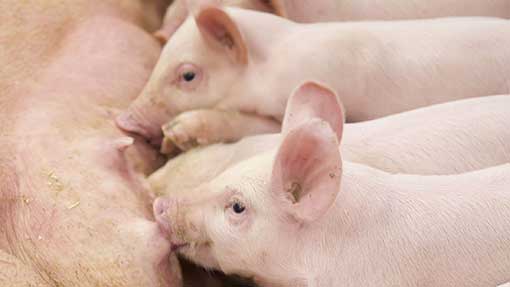Genetics can help select specific traits for pigs of the future

Pigs of the future will not only be more efficient, but more robust and tastier.
Pig breeding priorities are changing with sow aggression and taste emerging as leading traits. Alongside a continued focus on production, these emerging traits will benefit the whole supply chain.
Technological advances mean the tools available to pig geneticists are growing and allowing scientists to work on selecting specific traits.
Developments in areas such as genomics and recording software means the pig of the future will not only be better at converting feed, but more resistant to disease and tastier on the plate, too.
All the selection changes made today take several years to filter down into sire selection catalogues. However, breed companies are taking a long-term, broad view of requirements for the pig of the future.
Grant Walling, director of science and technology for JSR Genetics, says he is witnessing a big shift in breeding goals, with the ultimate aim of securing a future for British pork.
“Selection traits are not only aimed at improving efficiencies on farm, but also producing a product that will excite consumers, secure a market for pork and create a sustainable pig industry,” he says.
The pig of 2025
Predicted performance:
- Produce six litters
- Average birthweight of more than 1.6kg
- Average of 14.5 pigs born alive
- Growth rates of 944g/day from weaning to finish
- Sow output of about 2.98t meat/year
- A feed conversion rate target of 2.0 for a whole finishing herd (not just the best animals)
- 90% of pigs born reaching slaughter
- High level of resilience to endemic diseases such as PRRS
- 95kg deadweight
Many of today’s selection traits reflect the huge strides that have already been made to improve pig productivity and efficiencies. For example, litter size may have increased in recent years, but the challenge is to maximise piglet survival. As a result, robustness has become a primary focus in dam lines.
“In the past 12 months we’ve started looking at robustness traits, which include teat numbers, birthweights and variation in litter birthweights. The ultimate aim is to maximise the number of kilos sold a sow,” explains Dr Walling.
He says many of the top-performing herds are already meeting or exceeding Bpex targets of 2t of meat sold a sow a year. However, the aim should be for the majority of herds to be hitting the 2t target, with the best doing 15-20% better.
To meet this, breeding companies have the challenge to produce a robust animal capable of thriving under a range of good farm environments.
With volatile feed prices and global pressure to efficiently produce protein, feed efficiency will continue to be a primary focus. In the past three years, JSR has been measuring individual animal intakes and weights to select for feed-efficient terminal sire lines.
Aggression
Recognition that individual animal behaviour can also influence the growth rates of fellow pen mates has also been drawn into selection programmes.
As animal performance has increased, so has the number of potential negative behavioural traits, such as aggression. This is possibly linked to increased feed demands.
Although increasing feed space can help reduce the effect of aggressive individuals at the feed trough, selecting an animal that does not have a negative effect on other pigs could be beneficial.
“We’re looking at social interaction traits and calculating the impact of an animal on others in the pen and linking it to their brothers in the next pen,” says Dr Walling.
He says the company is also in the initial stages of looking at how sows behave after producing a litter.
“A number of farms have removed farrowing crates, which can increase the likelihood of sows lying on piglets. We’re looking at the behavioural traits of the sow to see if we can select specific traits. It’s likely we’ll introduce this in the next two years,” he says.
Disease
The use of genomics to select for disease resistance is also coming to the fore and will help meet increasing global pressure to reduce antibiotic use on farm.
JSR has already used the technology to produce lines resistant to E coli K88 – a cause of neonatal diarrhoea. They are also looking to incorporate porcine reproductive and respiratory syndrome (PRRS) resistance into their breeding programme in the future.
Taste
Genomics also has a future role to play in selecting for meat-eating quality. This is an area of increasing emphasis for the pig industry to ensure pork remains a popular choice in shoppers’ trollies.
With this in mind, JSR has developed a Food Quality Centre to gather a bank of data surrounding meat quality, such as tenderness, juiciness and flavour. This work has helped shape some of their breed selection criteria.
“Flavour is linked to intramuscular fat so we’ve been using imagery software to look at intramammary fat. In the next two months we’ll have an intramuscular fat EBV, which will mean farmers will be able to select specific sires for flavour,” says Dr Walling.
The challenge of the future will be to maximise piglet survival by improving traits like teat numbers.

